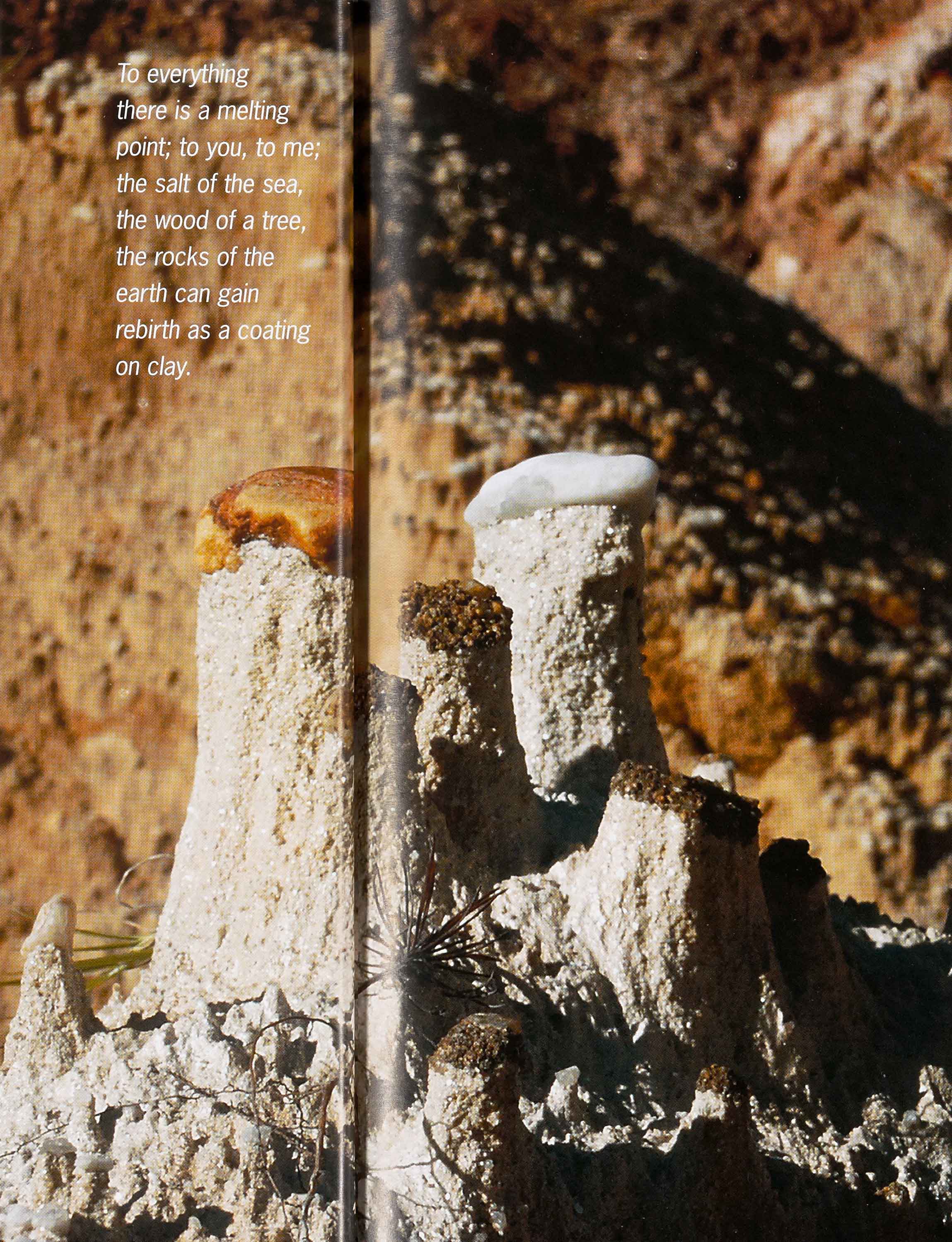Weird and Unusual Raw Materials
I started to get interested in oddball glaze materials after reading a small book titled Experimenting with Pottery, published in 1971 by British ceramist David Green. After explaining the usual three-column glaze components of Flux-Amphoteric-Glassformer, he points out a number of non-ceramic materials that can fit the requirements. These are common products found in kitchens, bathrooms and laundry-rooms - products available in any grocery store. Somehow we don't usually associate these materials with what they actually are - organic and inorganic compounds that, given enough heat, melt to form glass. It seems improbable to make a ceramic glaze out of cheese, kitty litter, toothpaste (usually a combination of kaolin, calcium and fluoride), or earthenware clay mixed with soap powder. In learning about materials and their reaction to heat, it can be very instructive to realize just how simply a ceramic glaze may be made.

Soap powders usually contain borax, boron and phosphates - all powerful fluxes. I used to give my students a hypothetical glaze-making scenario in which they were limited to materials from a grocery store and a creek. A simple line blend of red earthenware clay and soap powder will likely yield wonderfully lustrous Tenmoku glazes, just test-fire the mixtures in a small bowl to eliminate running; a small ball of clay pressed over one's elbow makes a perfect testing crucible. Fire at cones 04, 5 and 9 to monitor melting rates; keep accurate notes of what is being done and the results.
One of our earliest experiences with ceramic materials comes in the form of baby powder or talcum powder - a finely ground form of powdered Steatite rock, usually called talc or soapstone. Perfume is added, of course, as rock doesn't naturally smell like babies! Talc is a magnesium material, a major flux for high-fired glazes where it often helps to impart smooth, buttery surfaces and has a prominent effect on colorants, particularly cobalt. Almost all household paints contain various combinations of kaolin, barium, magnesium and zinc. Acrylic paints are easier to work with; painted on greenware or bisque, they can produce a wide range of surface texture and color. Automobile paints often contain metallic flakes or titanium crystals to give a sparkle to the paint. Sprayed over other "normal" glazes they can produce subtle color variations or even crystals.
And I didn't even mention fruits, nuts, sugars, proteins, and that old kitchen standby, bicarbonate of soda!
Oddball materials have a wide range of possibilities. Simple testing and playing with any material is the best way to learn its potential. For the maker of foodsafe functional wares, these materials should probably be avoided, although there is little to question in their composition. However, for the potter interested in experimental surfaces, there is much to be gleaned and used for a wide range of surfacing effects. If you don't believe me, start reading labels, then TRY IT AND SEE!

